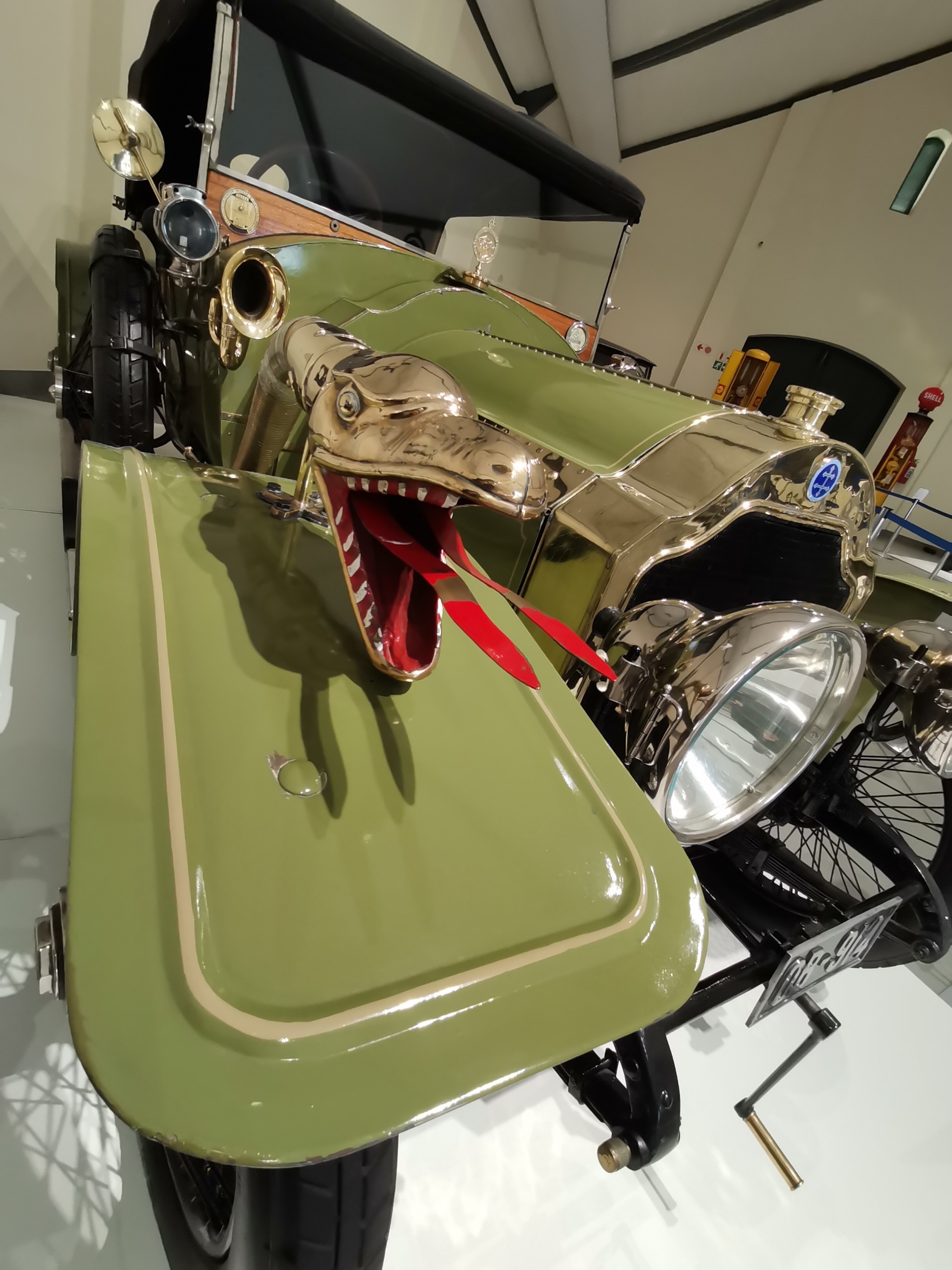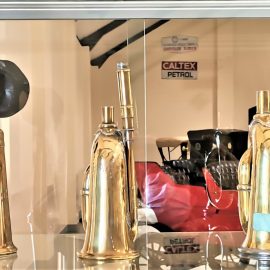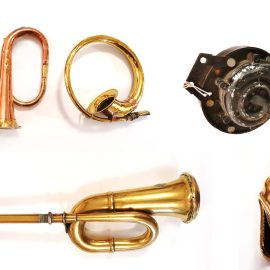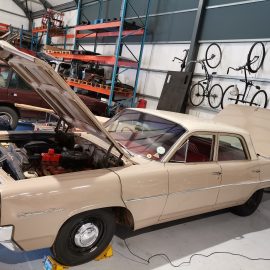
30 Jun Stories From the Stacks – Horns
A new series about the museum’s motoring memorabilia, compiled and written by FMM’s Assistant Curator Sian Theron. This month, Sian sounds off about the horns at FMM…
One of the most common and equally mundane and overlooked of features on any motor vehicle is the horn. We have all had our moments where we absolutely hate them, and of course those moments of appreciation where pushing down on the hooter and letting out that blast of noise can be quite therapeutic.
The horseless carriage was considered to be not only a marvel but also a very real menace. As much as horses were unpredictable – they were animals that had been worked with for centuries and therefore were a known factor – motor vehicles, on the other hand, were newfangled contraptions that could not be trusted. There was even serious anti-motoring propaganda centred on how dangerous these new equipages were.
Enter the humble hooter. Horns were designed primarily as a safety measure to enable a driver to provide the public with an audible notification of his/her presence. In Britain, the Red Flag Act even had motor vehicles preceded by a person on foot waving a red flag and blowing a horn to warn others of the approaching vehicle. From very early on, most countries in the world made it mandatory to have a horn fitted to a motor vehicle specifically to provide ample warning of approach by letting lose a blast of sound.
There were three varieties of horn, starting with the beautiful brass bulb air horns that gave anything from a proper honk to a higher-pitched toot, to an exhaust horn that was linked to the exhaust pipe and gave an almighty noise similar to a steam train, and then the electric horn, which is very much what we have fitted in most vehicles today.
FMM has accumulated a big collection of motoring horns in all shapes and sizes from the old, visually striking, gleaming brass examples to the comparatively mundane modern electrical versions. Although not all are in operational condition, there are a few fantastic working examples that are fitted to some of the vehicles.
I spent a fun morning in the workshop tooting horns to my heart’s content. My favourite is the quintessential Klaxon invented by Miller Reese Hutchinson and patented in 1908 – the AOOOOO-GHAA! This iconic sound was synonymous with the Roaring ’20s, and in particular the Model T Ford to which this horn was commonly fitted. The name Klaxon came from the ancient Greek klazō , which means ‘to shriek’. Rather apt…
Other memorable horns, if not so much for their sound as their appearance, are the variety of beautiful brass examples that are on display in a cabinet in Hall A. Taking the name horn quite literally, these hooters were shaped very much like orchestral horn instruments and come in a number of sizes and designs.
On the other hand, one of the most artistic you will find can be seen in Hall B on the front mudguard of the 1911 Lorraine Dietrich. It is shaped like an exotic serpent, complete with an extended enameled red tongue and white teeth!
BAAARP BAAARP!
Keep an eye out on our social media to watch a clip showcasing some of the horns mentioned!






